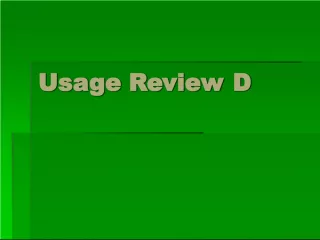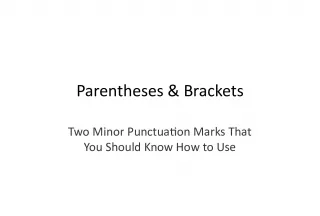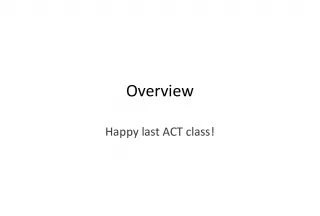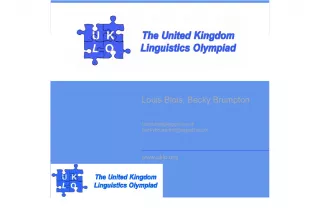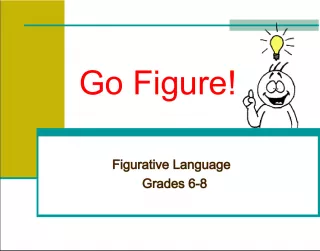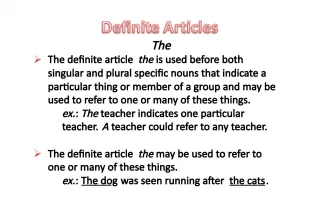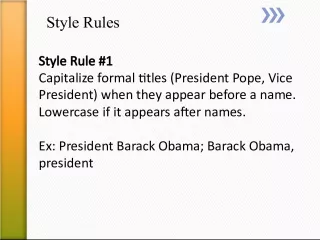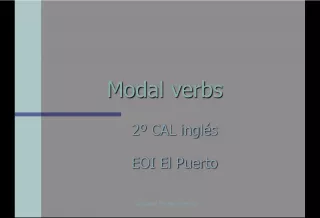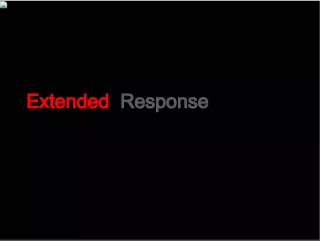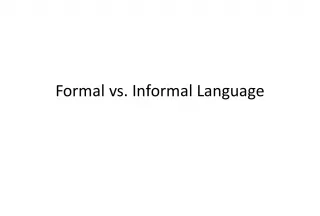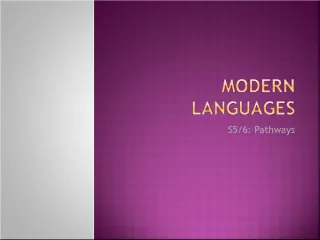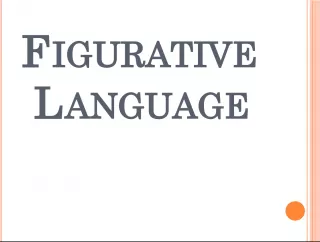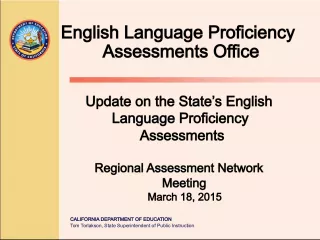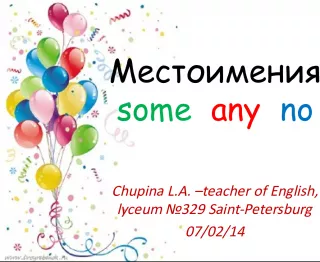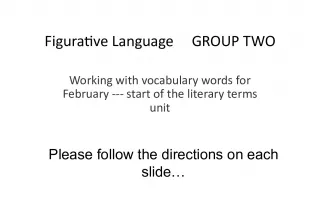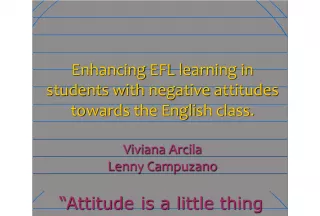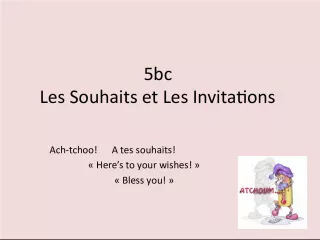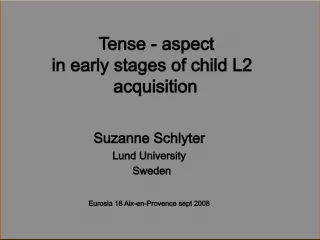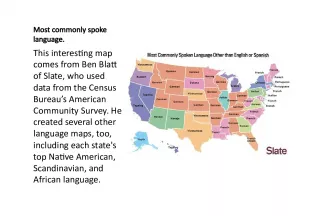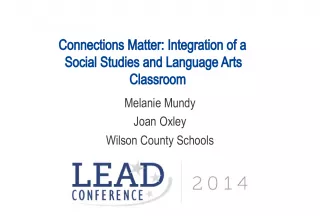Proper Usage of "Ought" in C Language
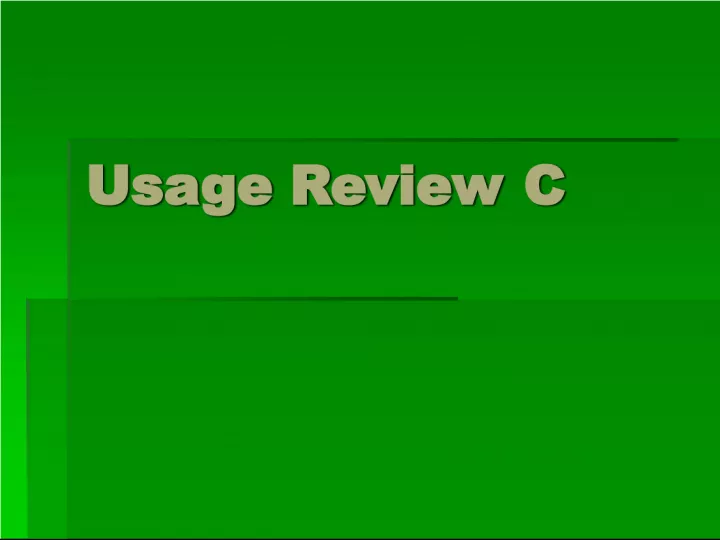

This usage review focuses on the correct usage of "ought" in C language. It is important to note that "ought" should not be used with "had" or "
- Uploaded on | 2 Views
-
 justinlegrand
justinlegrand
About Proper Usage of "Ought" in C Language
PowerPoint presentation about 'Proper Usage of "Ought" in C Language'. This presentation describes the topic on This usage review focuses on the correct usage of "ought" in C language. It is important to note that "ought" should not be used with "had" or ". The key topics included in this slideshow are . Download this presentation absolutely free.
Presentation Transcript
Slide1Usage Review C Usage Review C
Slide2had ought, hadn’t ought had ought, hadn’t ought Do not use had or hadn’t with ought . Do not use had or hadn’t with ought . Incorrect: You hadn’t ought to tease your little sister. Incorrect: You hadn’t ought to tease your little sister. Correct: You ought to be nice to your sister. Correct: You ought to be nice to your sister.
Slide3he, she, it, they he, she, it, they Avoid using a pronoun along with its antecedent as the subject of a verb. Avoid using a pronoun along with its antecedent as the subject of a verb. Incorrect: The magazine article it is well written. Incorrect: The magazine article it is well written. Correct: The magazine article is well written. Correct: The magazine article is well written.
Slide4Hisself, theirself, theirselves Hisself, theirself, theirselves These words are nonstandard. Avoid using these forms in speech and in all writing other than dialogue. Instead, use himself and themselves. These words are nonstandard. Avoid using these forms in speech and in all writing other than dialogue. Instead, use himself and themselves. Incorrect: He was so upset with hisself when he forgot to turn in the paper. Incorrect: He was so upset with hisself when he forgot to turn in the paper. Correct: He was so upset with himself when he forgot to turn in the paper. Correct: He was so upset with himself when he forgot to turn in the paper.
Slide5hopefullyhopefully Hopefully means “in a hopeful manner” or “it is to be hoped.” Use it as an adverb. Hopefully means “in a hopeful manner” or “it is to be hoped.” Use it as an adverb. Incorrect: Hopefully, we will be able to get to school on time. Incorrect: Hopefully, we will be able to get to school on time. Correct: The scientists hopefully tested the hypothesis. Correct: The scientists hopefully tested the hypothesis.
Slide6imply, infer imply, infer Imply means “to suggest.” Imply means “to suggest.” Example: My mother implied that I wasn’t telling her the truth. Example: My mother implied that I wasn’t telling her the truth. Infer means “to interpret” or “to draw as a conclusion.” Infer means “to interpret” or “to draw as a conclusion.” Example: Based on your body language, I can infer that you are not being honest. Example: Based on your body language, I can infer that you are not being honest.
Slide7in, into in, into In means “within.” In means “within.” Example: I know that my notebook is somewhere in the room. Example: I know that my notebook is somewhere in the room. Into means “from the outside to the inside.” Into means “from the outside to the inside.” Example: Kevin quickly jumped into the pool. Example: Kevin quickly jumped into the pool. In formal situations, avoid using in for into . In formal situations, avoid using in for into . Wrong: I poured the batter from the bowl in the pan. Wrong: I poured the batter from the bowl in the pan. Correct: I poured the batter from the bowl into the pan. Correct: I poured the batter from the bowl into the pan.
Slide8its, it’s its, it’s Its is the possessive form of the pronoun it . It’s is the contraction of it is . Its is the possessive form of the pronoun it . It’s is the contraction of it is . Incorrect: Its a good thing you studied last night; we have a test today. Incorrect: Its a good thing you studied last night; we have a test today. Correct: It’s a good thing you studied last night; we have a test today Correct: It’s a good thing you studied last night; we have a test today
Slide9kind of, sort of, kind of a, sort of a kind of, sort of, kind of a, sort of a In formal situations, avoid using kind of or sort of for the adverb somewhat or rather . In formal situations, avoid using kind of or sort of for the adverb somewhat or rather . Incorrect: I am kind of nervous about the tryouts. Incorrect: I am kind of nervous about the tryouts. Correct: I am somewhat nervous about the tryouts. Correct: I am somewhat nervous about the tryouts. In formal situations, omit the a . In formal situations, omit the a . Incorrect: It is a kind of a herbivore. Incorrect: It is a kind of a herbivore. Correct: It is a kind of herbivore. Correct: It is a kind of herbivore.
Slide10Learn, teach Learn, teach Learn means “to gain knowledge.” Learn means “to gain knowledge.” Example: I would like to learn how to play chess. Example: I would like to learn how to play chess. Teach means “to provide with knowledge.” Teach means “to provide with knowledge.” Example: Will you teach me the fundamental rules of chess? Example: Will you teach me the fundamental rules of chess?
Slide11leave, let leave, let Leave means “to go away”. Let means “to permit” or “to allow”. Do not use leave for let . Leave means “to go away”. Let means “to permit” or “to allow”. Do not use leave for let . Incorrect: Leave me be. Incorrect: Leave me be. Correct: Let me be. Correct: Let me be.
Slide12lie, lay lie, lay Lie and lay seem to give people more difficulty than do all the other irregular verbs combined. That's probably because the past tense form of lie is lay and thus indistinguishable from lay in the present tense except in usage. Lie and lay seem to give people more difficulty than do all the other irregular verbs combined. That's probably because the past tense form of lie is lay and thus indistinguishable from lay in the present tense except in usage. The principal parts (most-common verb forms) of lie are lie (present,) lay (past) and lain (past participle) . The principal parts (most-common verb forms) of lie are lie (present,) lay (past) and lain (past participle) . The principal parts of lay are lay (present), laid (past) and laid (past participle) . The principal parts of lay are lay (present), laid (past) and laid (past participle) .
Slide13lie, lay lie, lay As an aid in choosing the correct verb forms, remember that lie means to recline, whereas lay means to put something down. As an aid in choosing the correct verb forms, remember that lie means to recline, whereas lay means to put something down. Lie means that the actor (subject) is doing something to himself or herself. It's what grammarians call a complete verb. When accompanied by subjects, complete verbs tell the whole story. Lie means that the actor (subject) is doing something to himself or herself. It's what grammarians call a complete verb. When accompanied by subjects, complete verbs tell the whole story. Lay , on the other hand, means that the subject is acting on something or someone else; therefore, it requires a complement to make sense. Thus lay always takes a direct object. Lie never does. Lay , on the other hand, means that the subject is acting on something or someone else; therefore, it requires a complement to make sense. Thus lay always takes a direct object. Lie never does.
Slide14lie, lay lie, lay The printout is lying there next to the computer. The printout is lying there next to the computer. The secretary is laying a copy of the printout next to the computer. The secretary is laying a copy of the printout next to the computer. The holiday decorations lay in the box. The holiday decorations lay in the box. Martha carefully laid the holiday decorations in the box. Martha carefully laid the holiday decorations in the box. My basset hound has lain in front of the fireplace since early this morning. My basset hound has lain in front of the fireplace since early this morning. My basset hound has laid my slippers in front of the fireplace. My basset hound has laid my slippers in front of the fireplace.
Slide15like, as like, as Like is a preposition. In formal situations, do not use like for the conjunction as to introduce a subordinate clause. Like is a preposition. In formal situations, do not use like for the conjunction as to introduce a subordinate clause. Informal: The stir fry did not turn out like I had hoped. Informal: The stir fry did not turn out like I had hoped. Formal: The stir fry did not turn out as I had hoped. Formal: The stir fry did not turn out as I had hoped.
Slide16like, as if, as though like, as if, as though In formal situations, avoid using the preposition like for the conjunction as if or as though to introduce a subordinate clause In formal situations, avoid using the preposition like for the conjunction as if or as though to introduce a subordinate clause Informal: That guitar sounds like it is out of tune. Informal: That guitar sounds like it is out of tune. Formal: That guitar sounds as if it is out of tune. Formal: That guitar sounds as if it is out of tune.
